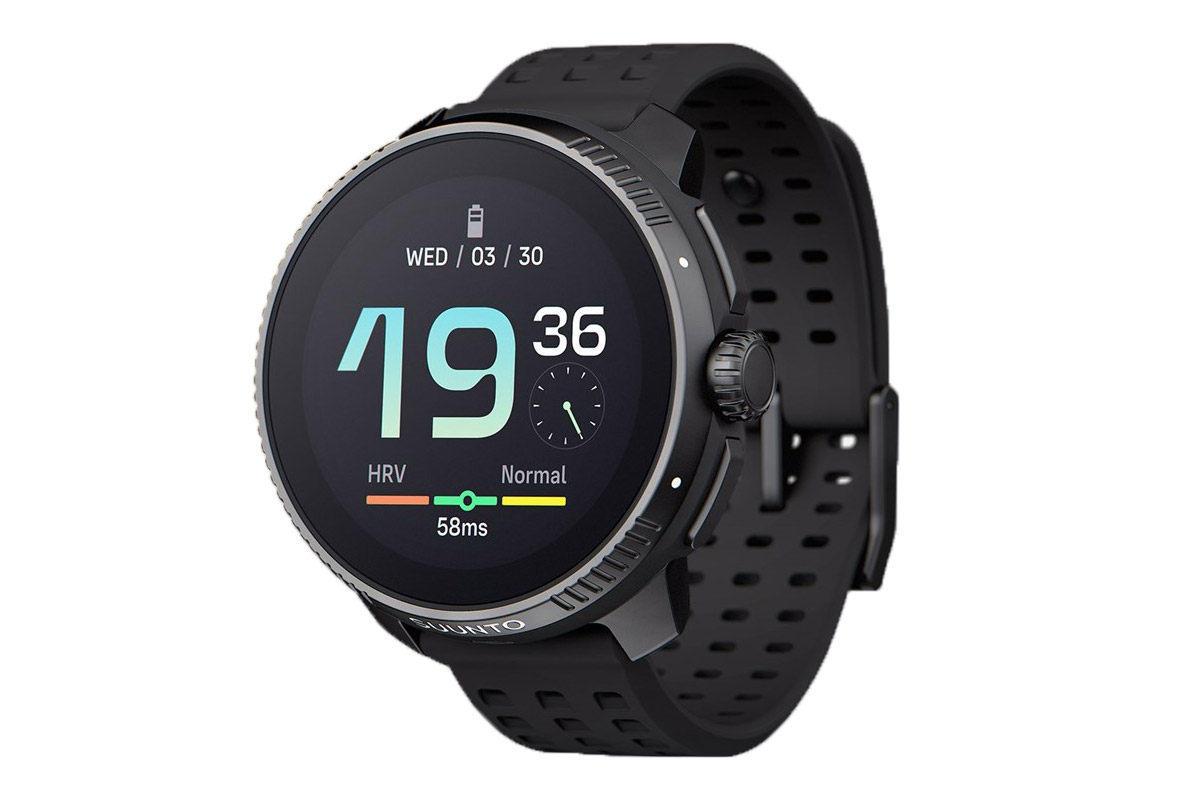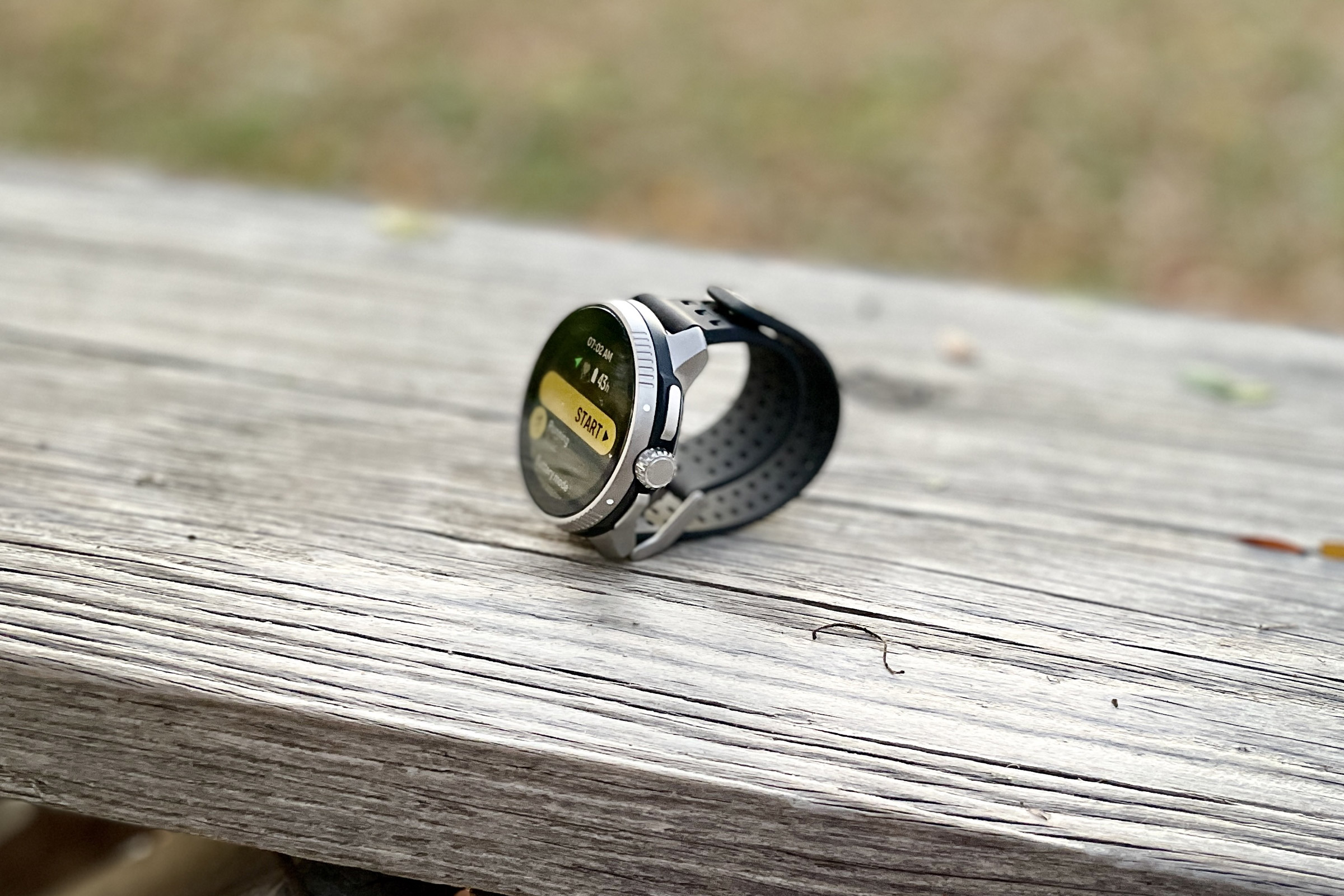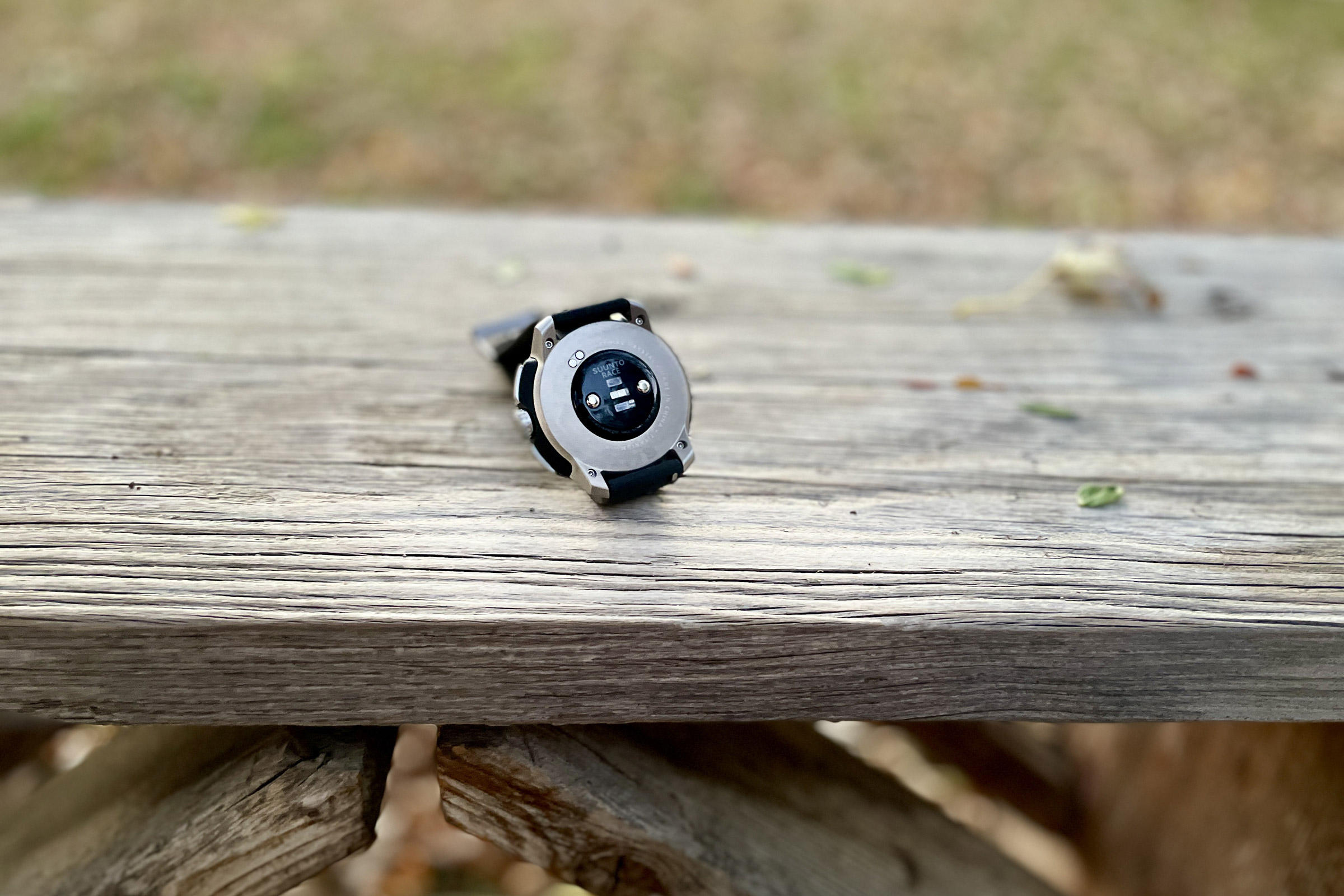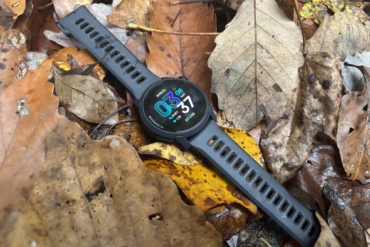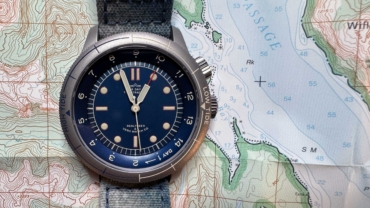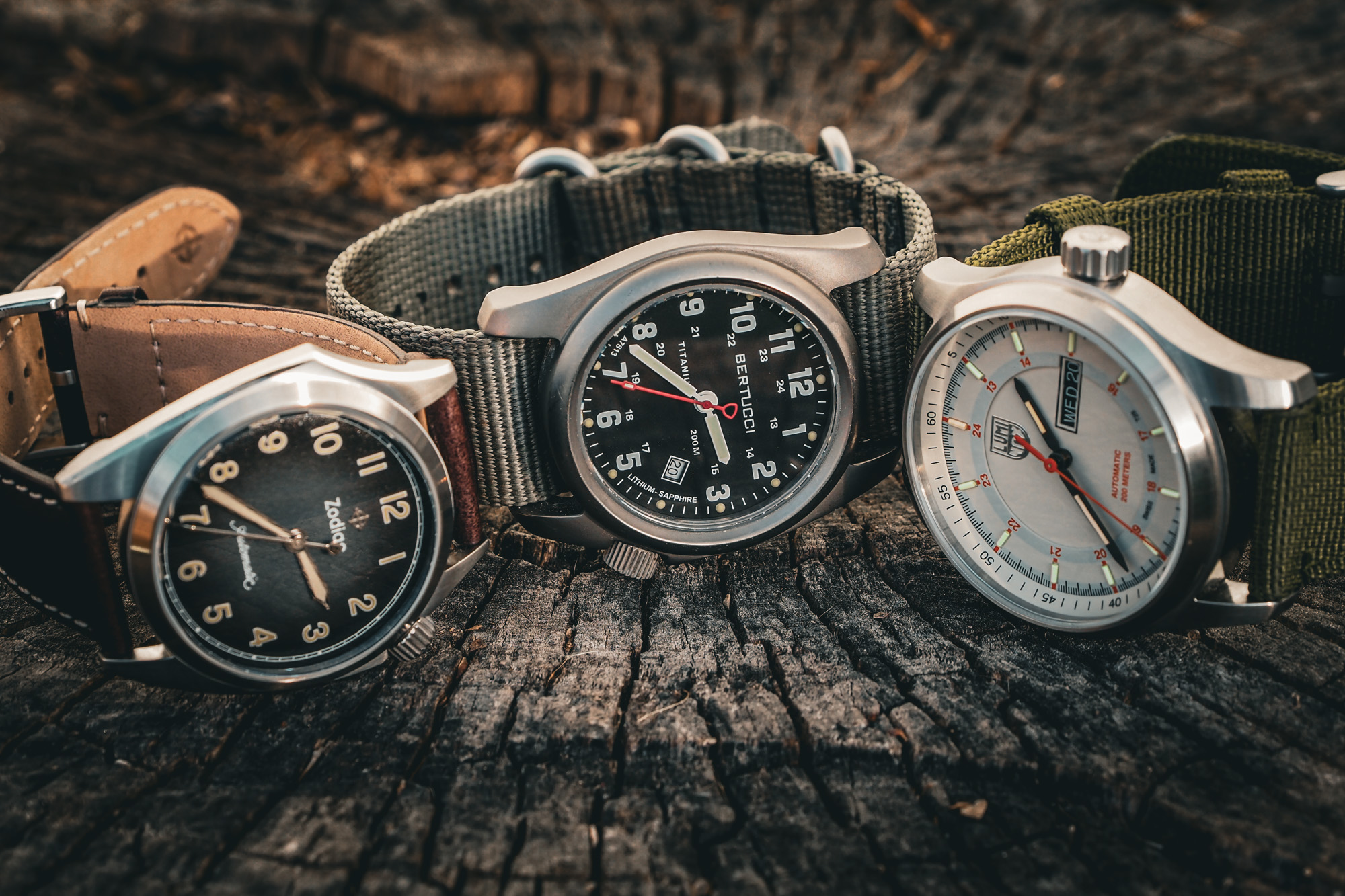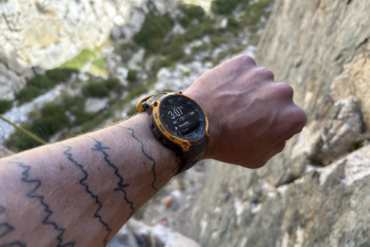Just 5 months after the release of the impressive Suunto Vertical, the company is back with perhaps a more usable watch for runners in particular: the Suunto Race sports watch.
This is for two reasons. First, the Vertical is a real “adventure” watch, meaning it’s made of optional bombproof materials like titanium and sapphire. Second, it comes loaded with over 90 activity types, meaning you can use it for running, rock climbing, watersports, backcountry skiing, and nearly any other sport type, with their unique data deliverables, in which you participate.
But with a price tag of $839, the Vertical is an investment many people will hesitate to make. On the other hand, the Suunto Race, launched this month, comes in at a more palatable $549 and weighs 70 g (4 g less than the Vertical).
I received an advance test sample of the Race for this first-look review — here are my initial takeaways.
In short: The Suunto Race is, in my opinion, the brand’s first true attempt at parity with Garmin and Coros. Substandard processing speed, battery life, display, price and functionality are a thing of the past. With Suunto’s class-leading design and aesthetic qualities, plus a focus on renewable energy for manufacturing and carbon neutrality, this is a watch that will no longer leave you loving the looks but longing for more.
To see how the new Race stacks up against other adventure watches on the market, check out GearJunkie’s Best Fitness Watches Buyer’s Guide.
-
Activity Tracking and Accuracy
7.0
-
Battery Life
7.0
-
Training Data and Planning
7.0
-
Build Quality
7.0
- Size: 49 x 49 x 13.3 mm
- Weight: 70 g. (Titanium version)
- Battery: Lithium-ion
- Single-band GPS battery life: 50 hours in Endurance mode
- Global satellite networks: GPS, GLONASS, Galileo, QZSS, BeiDou
- Screen/Bezel: 1.4" sapphire crystal and stainless steel
- Navigation capable: Yes
- Barometric altimeter and compass: Yes
- Water resistance: 10 ATM (100m)
Pros
- Beautifully crisp and clear AMOLED display
- Digital dial for quick scrolling in and around maps
- Worldwide offline GPS maps
- Massive screen is easy to read
- Beautiful build quality, materials, and aesthetic
Cons
- No offline music via third-party streaming services like Spotify
- Unlabeled and unmarked maps
Suunto Race GPS Watch First Look
The Suunto Race Comes to Life
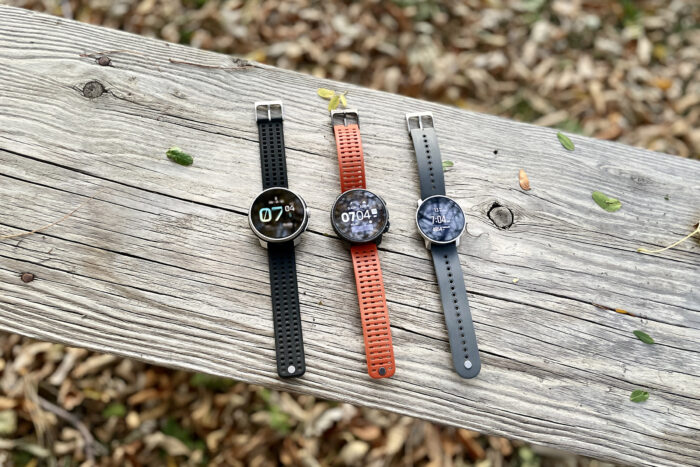
Suunto’s Head of Americas, Dan Suher, recently presided over a sneak preview of the new Suunto Race sports watch, released today, explaining in certain terms the battery capacity of the Suunto Race.
“It is 40 hours using full dual band with GNSS accuracy; we’re not going to exaggerate its capacity on less accurate data collection,” Suher said.
This was a shot across the bow, in a sense, as many rival GPS watch competitors like to promote the biggest and best number a battery is capable of, while glossing over how frequently data is collected and which satellites it is calling on (both of which utilize less power and thus more battery life).
Suher wants consumers to understand that 40 hours of full-performance battery life on a single charge should be enough for most athletes, including ultra runners. The cherry on this statement, however, is the fact that the Suunto Race has Suunto’s first-ever AMOLED display, and that the 40 hours of battery power includes running this brilliant display full time.
And though it is less of an adventure watch than the Vertical, the Race’s display is actually bigger at 1.43 inches compared to the Vertical’s 1.4 inches — and it still comes with an optional titanium bezel and sapphire glass.
A Beautiful New Display
The real show stopper on the Suunto Race and the first in the brand’s history is the AMOLED display. If you’ve used a Suunto device in the past, this new look will floor you. It not only gives the watch a more premium feel but it is also crystal clear indoors and on the trails with vivid brilliance and clarity.
There’s no denying that running such a sophisticated display is a drain on the battery, but there are several ways the watch automatically incorporates battery-saving tricks. When at rest, the display goes to sleep and shows nothing. But while at rest or during an activity, simply turning your wrist toward you wakes the watch to full clarity.
While running or during activity, the display will dim until you turn your wrist, where it again will waken to full clarity. These tricks are crucial to maintaining the estimated 40 hours of battery life. And though the Vertical offers up to 80 hours in full-performance mode, the screen is a resolution relic compared to the Race.
Scrolling Digital Dial
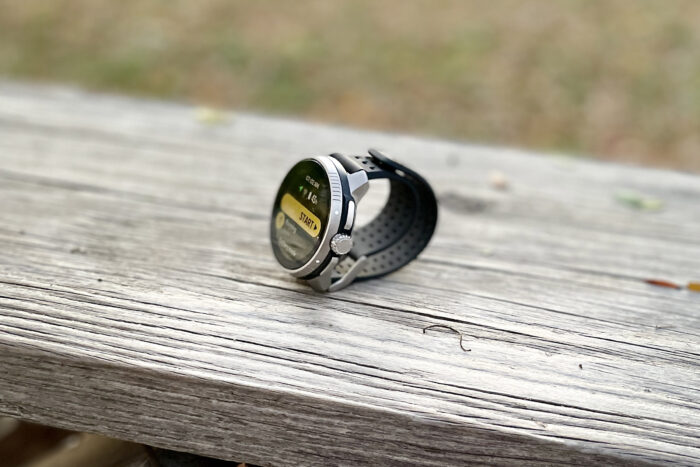
Another first-ever Suunto feature on the Race watch is the digital dial on the side. It is bookended by two large, solid-feeling buttons and a touchscreen-enabled face. The dial is precise-feeling when scrolling up (to pick an activity type) or down (to access the control panel or see personal data like heart rate, blood oxygen, your personal recovery score, and much more). Though, I’ve jogged past my intended selection many times already.
Where the dial really shines, though, is in mapping and navigation modes. Turning the dial allows you to zoom in, out, and all around the map unlike the many button clicks it takes to get around maps on the Suunto Vertical. This is a much more enjoyable and faster process, and it should be very useful when cold weather impairs finger dexterity.
Global offline maps are available for free in the Suunto app and transfer fairly quickly to the watch over Wi-Fi. Maps are still unlabeled, however, Suher said that Suunto might change this in the coming months via software updates, noting that it is a particularly critical demand from customers.
Heart Rate Variability
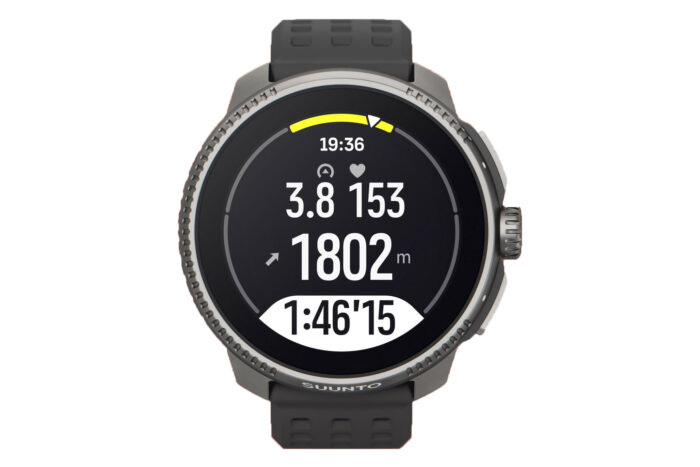
The Suunto Race uses the same optical heart rate sensor as the Suunto Vertical, which performs, like all major GPS brands, inadequately. So, it might come as a surprise that Suunto, in yet another first, offers Heart Rate Variability (HRV) monitoring with the Race.
HRV as a health indicator rose to prominence with the mass adoption of fitness tracking devices that people began wearing full time: during rest, exercise, and sleep. It does help to paint a broad picture of your health and particularly for runners, your recovery and ability to peak for a workout or race.
The higher the HRV the better, meaning your body is swinging from low to high stress with ease. Little variability indicates a lack of freshness or even sickness. I just got my Suunto Race 2 days ago, and it takes 14 days of sleep tracking to establish one’s HRV range. And though the optical heart rate sensor is unreliable under high exertion. it does manage to decently record heart rate during sleep and moderate activity.
Those fully opting in to the Race’s heart rate data will be able to build training programs around their HRV by grabbing free tools from the SuuntoPlus Guides store to dictate future race performance or volume of work.
GPS, Accuracy
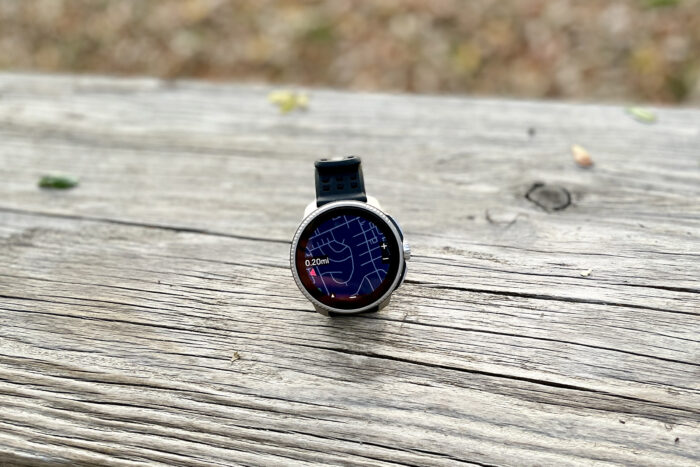
Wearing the Suunto Race on my left wrist and the Garmin Fenix 7S on my right, I ran up the Amphitheater spur on Boulder’s Gregory Canyon; a 2,300-foot climb in just 1.9 miles surrounded by rocky walls and tree cover. The Fenix series has been the front runner for me for several years in terms of a best-in-class GPS watch (for its features and accuracy), but Suunto has really achieved parity with Garmin here.
The run produced identical tracks due in part to Suunto now using full-time, dual-band GNSS in its best performance mode. GNSS is able to access the major global satellite systems like GALILEO, GLONASS, QZSS, and BEIDOU to offset interference from canyon walls, tall buildings, or extreme weather.
Connecting to a satellite to start an activity on a Suunto watch used to take a long time. I remember many times pacing back and forth, or waving my arm wildly in the sky like a lunatic, waiting for Suunto to locate a satellite.
The functionality is much improved that I actually connected to a satellite while in my car, getting to the trailhead. This acquisition speed has the added benefit of letting the GPS “soak,” allowing your watch to communicate with more satellites to create a stronger connection and reduce signal degradation.
Processing Speed
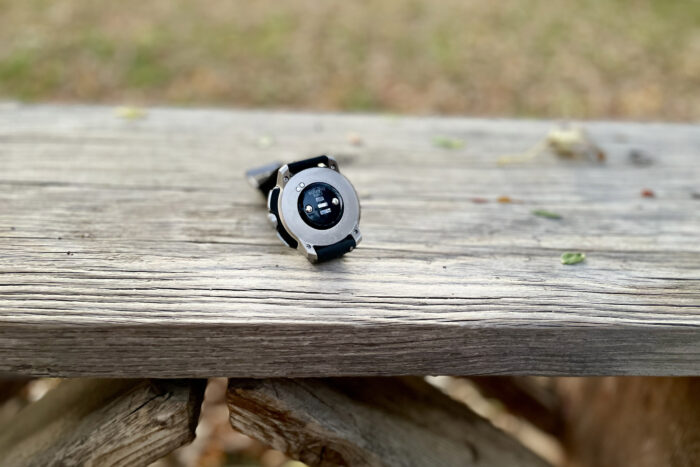
In just a few clicks of the new scrolling dial, you might question whether this is, in fact, a Suunto you’re wearing. So much speedier is the processor in the Suunto Race that it makes you wonder why the company has been so slow to catch up to the competition. The traditionally high prices of a Suunto device would suggest similarly capable chipsets but alas, it truly has been the most aggravating aspect of using a Suunto in the last 5 or more years.
Thankfully, the Suunto Race changes this tradition for the better. You’ll be wowed by how quickly you can move around the watch’s functions and when saving and uploading files to third parties, like Strava.
Suunto Race Review: Who It’s For
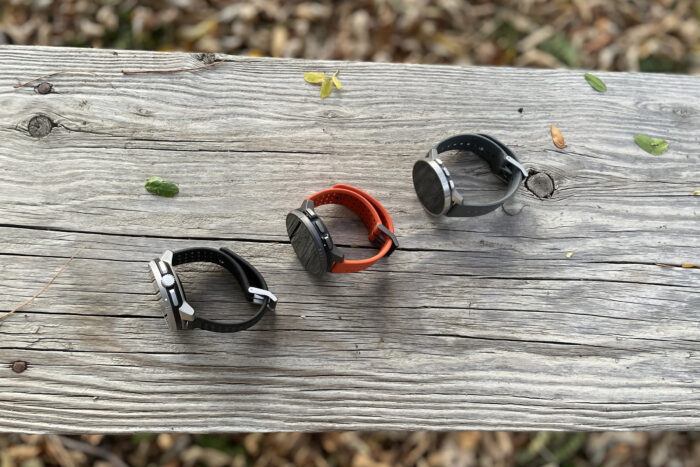
Among the competition Suunto has lagged behind for a long time now. This watch, even more so than the still-new Vertical, brings the brand back to relevance. During the Amer Sports days with its hand-in-glove connection to Salomon, and especially athletes like Kilian Jornet and Emelie Forsberg, Suunto occupied the mind share of the trail and mountain running community like no other brand.
Garmin was wrestling to establish itself with triathletes and cyclists, and Coros was nascent. So, for the Suunto brand to get back to a very competitive place, with class-equaling features and a more reasonable price point, we excitedly welcome them back with open arms.
We should note that unlike the Suunto Vertical, which was designed and is manufactured in their 100% renewable energy-backed Finland factory, the Suunto Race is manufactured in a Suunto-owned Chinese factory with a less specific renewable or sustainability track record.
Suher said that despite this current situation, Suunto is working to make its Chinese factory on par with its Finnish counterpart’s sustainability standards.

